|
I've been into shooting ever sense I've been 12 years old and even
bought my first gun when I was 13, which was a used Ruger 10/22. I never
sold that .22 to this day and it still shoots great! Over the years I've
bought and sold a few guns but mostly I've purchased them because having
more than you need is something guys seem to do.
This update will be
about modifying a shooting accessory that I've owned for a coupe of
years now. And the piece that you see below is a bipod made by
Harris Bipods and works
great. The model is HBRS which has legs that extend from 6" to 9" plus
it swivels to compensate for uneven terrain (hence the S at the end of
the model). I've added the lever (that replaced a knob) that you see in
the middle which is for tightening the swivel mechanism. The two springs
allow it to fold up against the gun for rapid deployment and there are
springs inside the legs that help them move downward.
Notice the rubber feet on the legs, they have roll pins to keep the
feet in place and come this way from the factory. But some people would rather have a different kind of foot
from time-to-time. However, changing them is very slow process and you
can potentially damage the legs if not done correctly. What you need to
do is drive out the roll pins with a punch and hammer, supporting the
leg as you pound away. If you don't, you'll bend the legs as they're
made out of aluminum tubing.
|
|
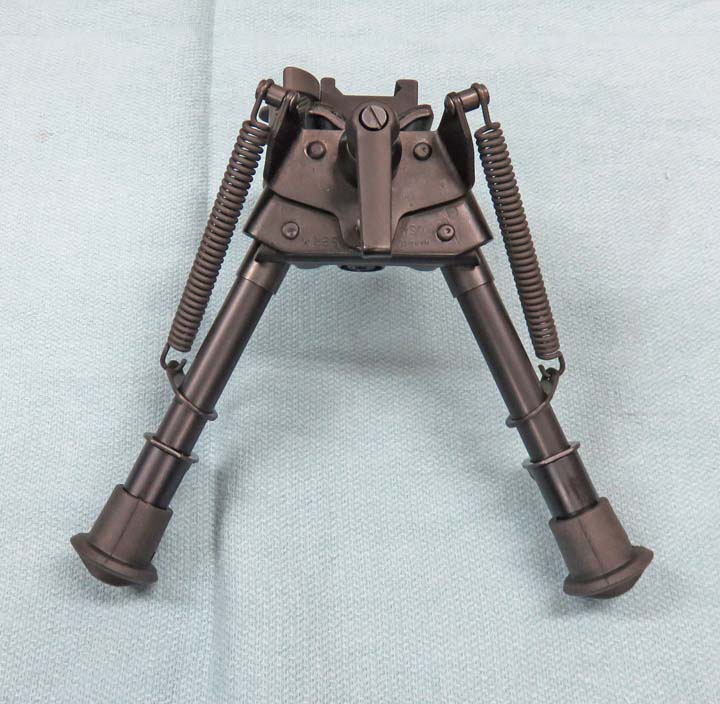 |
| Here you can see another style of foot that I've put
on, but like I said, it's very slow to do. These feet are made by
Tactical Supply and are
made out of aluminum and black anodized. They attach the same way as the
rubber feet do, with the existing roll pin, but you shorten it so it
looks right.
Now choosing which foot to have on your bipod depends on the type of
shooting that you're doing. Say you're at the range, shooting off a
bench rest, then the rubber would probably be best. But if you're laying
prone in the dirt or soft sand, then the pointed ones might be better.
Knowing this I wondered how I could change these feet without going
through all the hassle of using a hammer and punch, and maybe even do it
in the field.
What I'm going to do is make some custom fasteners so I can swap
between feet quickly and easily. On the other hand, I'll be voiding my
warranty by doing this because I'll have to modify my bipod.
|
|
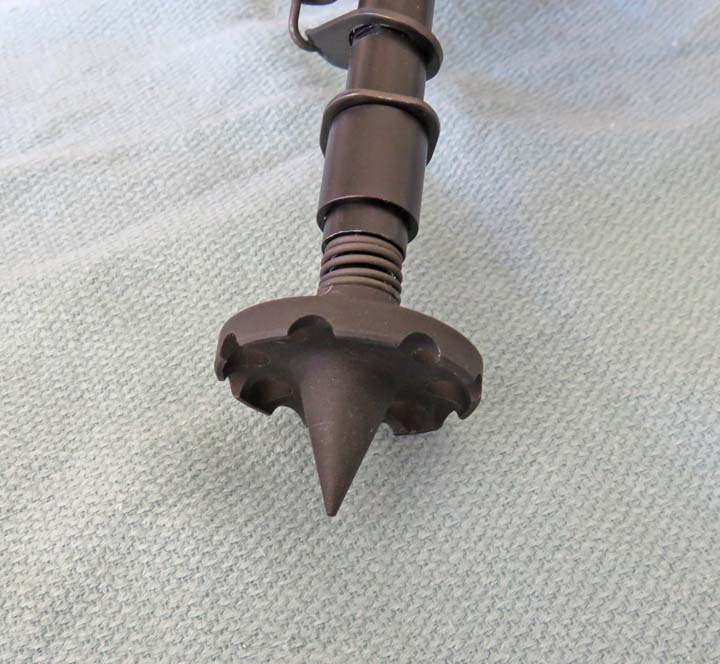 |
What I plan to do is make some fasteners that have a small head on one
end and some female threads on the other. By sliding the fastener
through the hole in the feet and leg, I can use a screw to keep them in
place on the other side. Here I'm using a 1/8" diameter pin inserted
into the existing roll pin hole to make sure the hole is aligned before
drilling it.
|
|
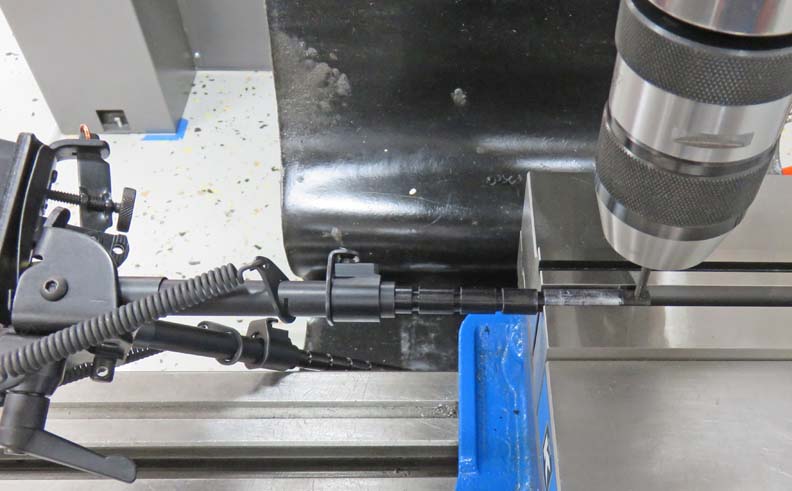 |
Here is a close-up of the alignment pin and leg. Once the pin can slide
through the hole without binding, I'll use that location for my X and Y
zero, or starting point.
|
|
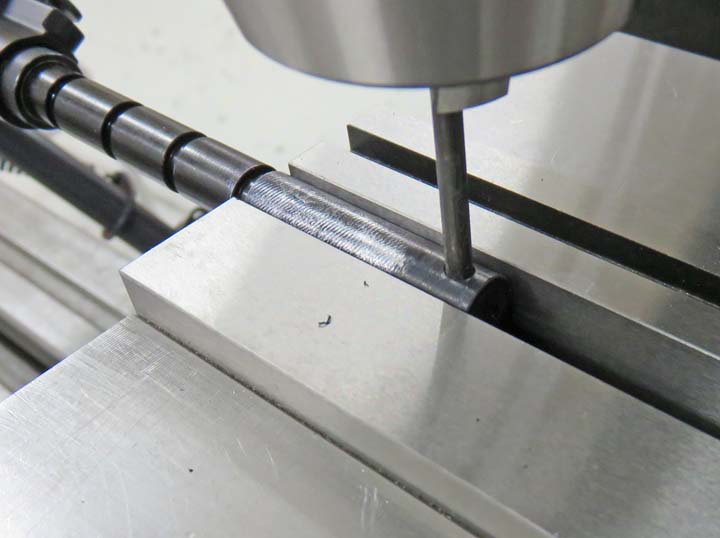 |
|
I removed the pin and now it's time to open the hole
in the leg to 3/16" diameter.
|
|
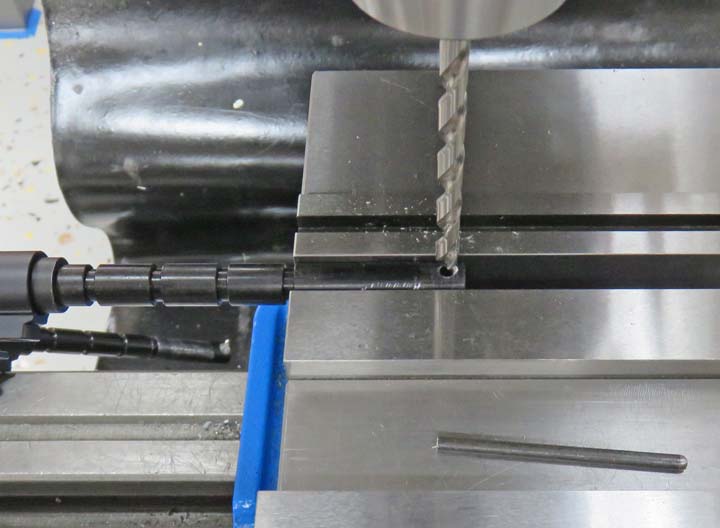 |
|
Here you can see the difference between the existing
roll pin and my new hole diameter.
|
|
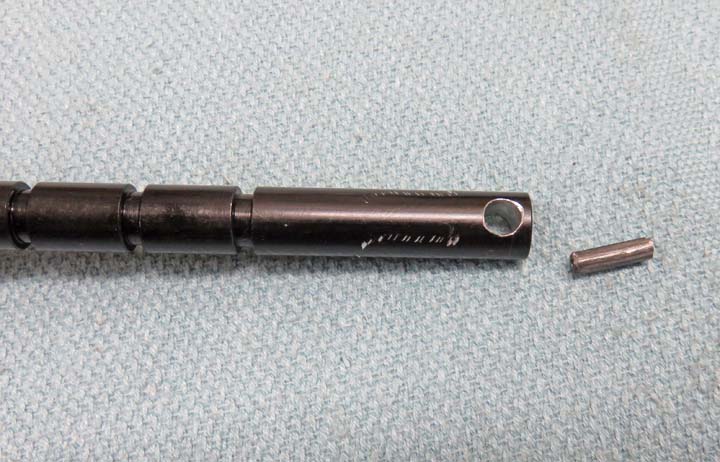 |
|
I'll need to do the same thing on both rubber and
aluminum feet, so
the same procedure was used for all of them.
|
|
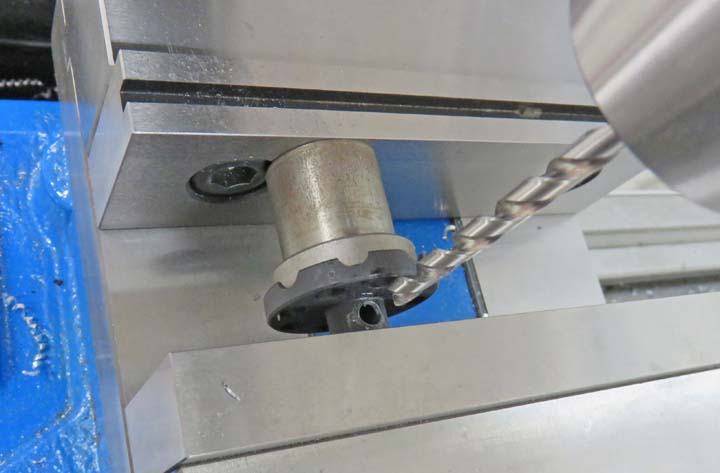 |
|
New hole vs. the old one (voided the warranty on these
too).
|
|
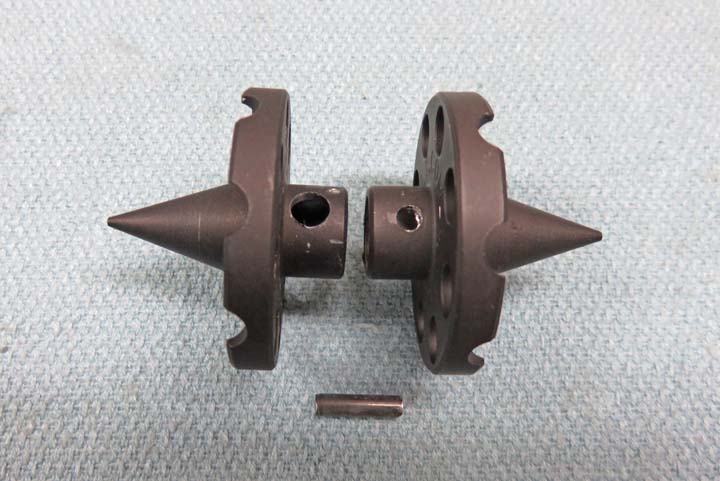 |
I made some custom fasteners out of aluminum that have 6-32 threads on
one end and a slot on the other. The slot will be used with a straight
blade screwdriver. There are two lengths of fasteners depending on which
foot I'm using. To put the slot in the fasteners I used a .032" thick
slitting saw on an arbor held in a v-block which was clamped in my
milling machine vise. One pass and I the slot was done.
|
|
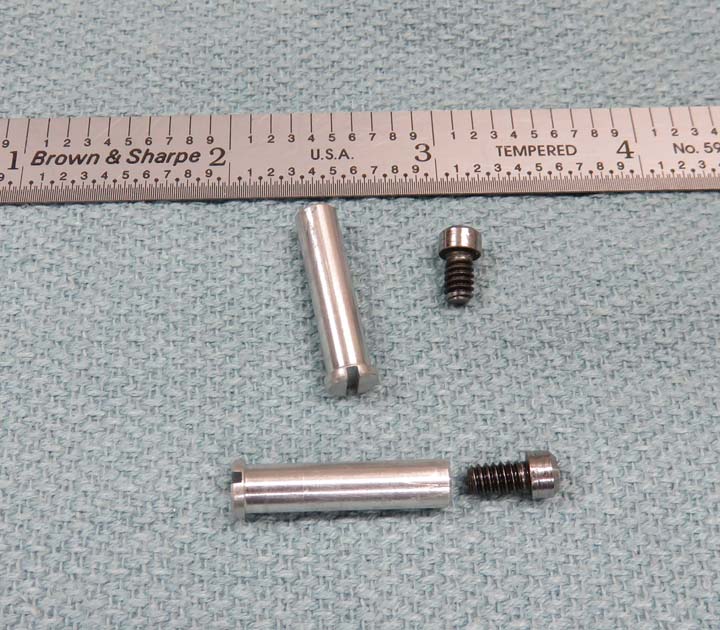 |
|
1
2 |